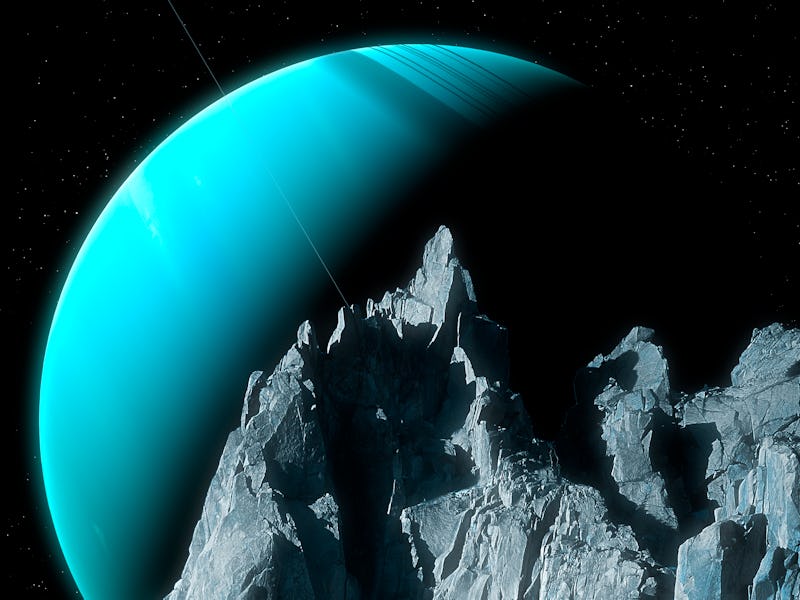Astronomers have a cataclysmic new theory to explain Uranus’ tilt
It may have all started with a moon.

There are plenty of interesting things about Uranus. Its season lasts as long as its day, it’s the second least-dense planet, and it has a collection of 27 moons.
But maybe the most puzzling fact about Uranus is that it is the only planet that lines on its side — relative to its orbital plane, at least.
The most common suggestion for why the planet is tilted 98 degrees on its axis is that it was struck by a series of large impacts early in the Solar System’s formation.
However, new studies from a team at the Sorbonne point to a potential alternative explanation — Uranus used to have another, larger moon that pulled it onto its side and then impacted the planet itself.
Flaws in the model
Neptune also has an axial tilt, but its origins are likely quite different from Uranus’ tilt.
A flurry of research into the orbital mechanics of the gas giants has been underway lately. That flurry helped to point out a series of flaws in our current model of what happened to Uranus. The most obvious flaw is highlighted by a similarity between Uranus and one of its neighbors — Neptune.
Neptune’s axial tilt is only 30 degrees (still a lot by planetary standards) but nowhere near the level of Uranus. However, both planets have similar spin rates. Impacts that are large enough to knock a whole planet on its side would also have a pretty significant impact on its spin rate.
So it is not very likely that random minor impacts caused one planet to almost 70 degrees more than the other while not affecting their spin rates.
Similar spin rates point to much “smoother” processes that took place over eons but dramatically affected the properties of the two gas giants.
The real reason for the tilt?
Uranus may have gotten its tilt from a large moon.
Scientists have already hypothesized the “Great Migration” of the outer planets through the inner solar system and its cloud of early planetessimals, which was likely the cause of events such as the Late Heavy Bombardment, which is responsible for many of the craters visible on our Moon.
That got the researchers thinking — axial tilt in gas giants is typically established early in its formative years. The comparatively small axial tilts of Jupiter, Saturn, and Neptune can all be explained by one-off phenomena that happened after the planets were fully formed. However, Uranus’ higher tilt is different.
The scientists posit that it might have happened in two stages. At first, a relatively large moon, about .03 percent the size of the planet itself, got stuck in a resonance loop with its host planet and slowly pulled the planet over onto its side.
Due to complex orbital mechanics, which are nicely explained in a recent paper the authors published on the pre-print server arXiv, a large enough moon could interact with the gravitational pull of its parent planet in a way that would cause it to be pulled onto its side.
However, the second phase is the more intriguing of the two, at least from an astronomical catastrophe standpoint. Currently, Uranus has 27 known satellites, none of which fit the description required to create such orbital resonances. So, where did it go? Most likely, it crashed into the planet itself after an orbital dissonance caused it to destabilize its orbit.
There are still some problems which this two-stage theory as well — for example, would the current crop of Uranus’ moons have survived a gigantic one threading its way toward its ultimate destruction?
But based on models that the Sorbonne team ran, it seems there is a plausible physical scenario where Uranus ends up tilted with the correct orbit and spin rates, and an impact on the planet destroys the accompanying satellite that caused that tilt.
It’s a fascinating idea that warrants further study. Unfortunately, it will probably be a long time before we find any other physical evidence that might point to the theory’s validity or not.
But at the very least, it’s an interesting thought exercise to imagine Uranus slowly being pulled by one of its moons over billions of years, only eventually to have that moon crash into it. Such a dramatic history would make the planet even more interesting.
This article was originally published on Universe Today by Andy Tomaswick. Read the original article here.